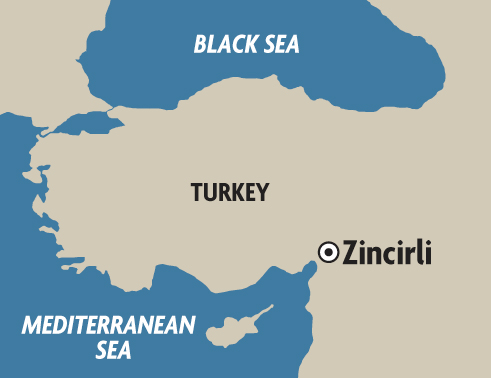
According to its exceptionally well-preserved 13-line inscription, this 3-foot-tall, monumental basalt stela dated to the eighth century B.C.E. depicts the eternal funerary feast of Kuttamuwa, a high official of the Iron Age kingdom of Sam’al (modern Zincirli) in southeastern Turkey. Seated in a simple, straight-backed chair, the bearded, flat-nosed Kuttamuwa wears a pointed, tasseled cap and is clad in a long, fringed robe. In one hand he holds a pinecone, symbol of the timber-rich Amanus mountains that surround Sam’al, and in the other, a fluted chalice, probably filled with wine. Before him is a table laden with sumptuous foods prepared for his mortuary feast, including duck, loaves of bread and roasted meat.
The stela’s Samalian inscription, a local dialect of Old Aramaic, is written in a variant of the same Phoenician alphabetic script that was used by the ancient Israelites. It describes how the stela, which Kuttamuwa had crafted while he was still alive, was to be set up in a private mortuary shrine where Kuttamuwa’s “soul” (or nebesh, a variant of the Hebrew word nefesh) could eternally feast with the gods and his descendants. Most intriguingly, however, the inscription implies that Kuttamuwa’s “soul” would live on not in his bones or even in the hearts and minds of his loved ones, but rather in the very stela that he had erected for himself.


